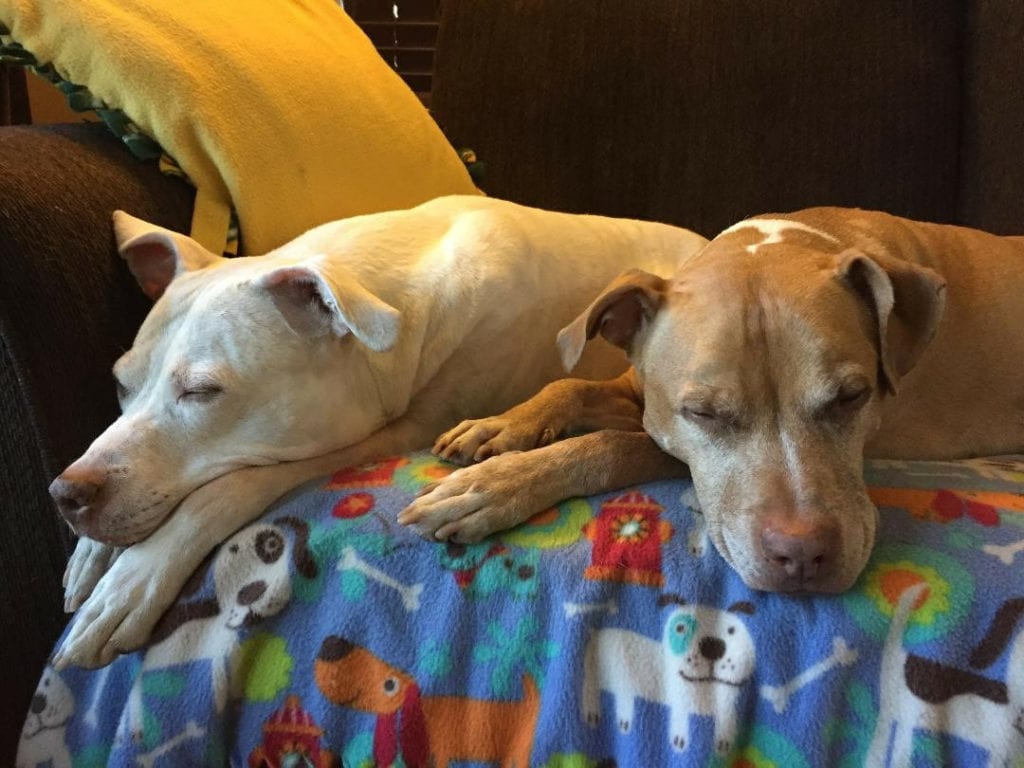
Just like humans, dogs can catch the flu too. According to the Centers for Disease Control and Prevention, the respiratory illness is caused by specific Type A influenza viruses known to infect dogs. The first case of canine influenza was reported in Florida, in 2004, and a second strain, from South Korea, was reported in 2015. And while no cases of human infection have ever been reported from either virus, both strains are highly contagious among dogs.
The first strain, H3N8, initially transferred from horses to racing greyhound dogs in Florida in 2004. The equine virus is thought to have mutated and then transferred to canines. There were very few fatalities in dogs from the new virus, however, it did spread significantly between dogs throughout the United States and became well established in the dog population. Prior to 2004, the H3N8 virus had been present only in the equine population for over 40 years and had never been transferred to humans. This new virus, at the time, created difficulty for veterinarians as it mimicked symptoms of Bordetella, or kennel cough, an infectious disease among the dog population.
In 2009, a vaccine was developed and approved, to help protect dogs against canine influenza. Like the vaccination for humans, it does not offer instant protection. The canine vaccine takes 30 days to provide full efficiency and, in some cases, can require a second dose.
In 2015, a new strain of canine influenza was identified in the United States, from an infected dog arriving on a flight from South Korea to Chicago. This strain, labelled H3N2, had been found in dog populations in Asia since 2007 and is considered to be a mutation of the avian flu. While this new virus was initially much milder than its predecessor, it triggered some severe cases of pneumonia in dogs in the United States that year. The H3N2 strain spread much more easily than its predecessor as there was no immunity against the new virus among dog populations. Scientists have suggested that the increased spread of the new virus is because it remains contagious for one week longer than the previous virus.
Both of these strains have since been identified worldwide among dog populations. Symptoms of canine influenza can include fever, lethargy, dry cough and loss of appetite. The newer form of the virus, H3N2, seems to come in two forms: one more mild version and another that presents more serious symptoms, including a higher fever, and can be accompanied by a secondary, bacterial infection that can cause pneumonia. Some cases have involved what appears to be a nervous tick and can be related to extreme difficulty in breathing, resulting in wheezing and incessant coughing. Veterinarians can conduct tests to determine whether your dog has contracted canine influenza. Most dogs recover from symptoms within 3 weeks.
According to the SPCA, the canine influenza virus can survive on surfaces for up to 48 hours. These surfaces can include not only the dog itself but blankets, food and water bowls, leashes and clothing.
Most often, dogs who contract either strain of canine influenza have been housed in kennels and shelters but anywhere that dogs socialize can be a risk. Many boarding facilities require the influenza vaccination be given one month before they will accept your dog. Dogs who play in dog parks or those who attend doggy-daycare type facilities are at higher risk of contracting the virus and, like humans, the elderly and very young populations are most vulnerable. Exposure to the virus is limited amongst residential dog populations and therefore immunity is lacking.
The majority of dogs do not necessarily require vaccination. Speak to your veterinarian to determine whether your dog should be vaccinated against canine influenza and what you can do to keep your dog safe and healthy.

Leave a Reply